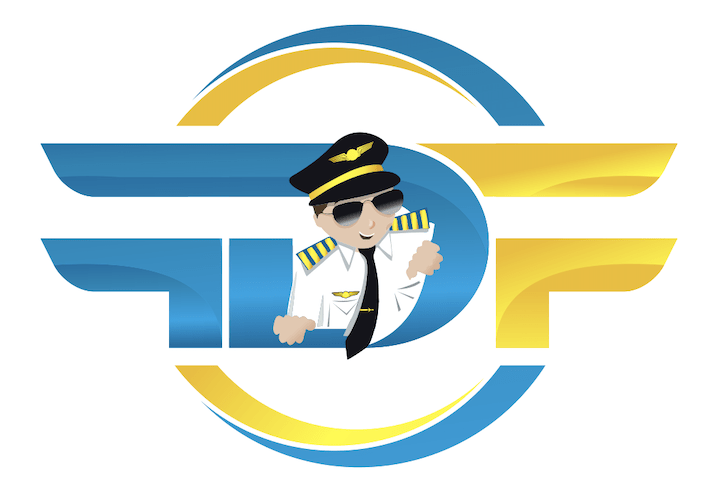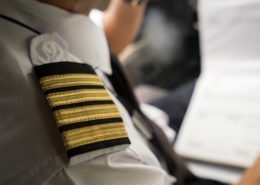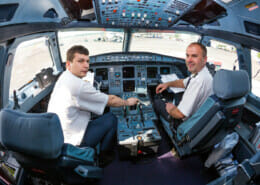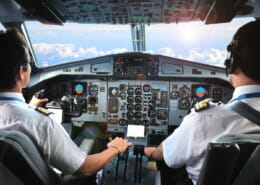A Guide to Filling in an Online Application for a Pilot Job
The vast majority of airlines now use online applications as their primary method of inviting prospective candidates to apply for a role. This often means that a CV or Cover Letter is exchanged for a series of “personal example” or “HR competency” based questions and questionnaires.
These applications are typically manually reviewed by a real person who assesses your motivation, skills and past experience to see if they believe you would be a good initial fit for the position.
Some recruitment software packages may use an automated system to assess your applicaiton. The systems will score points for your application based on what it believes is the quality of your answer including the use of key words and phrases.
As this is typically the first stage of the application process you will be up against hundreds if not thousands of candidates. The online application questions provide an opportunity for you to sell yourself to the airline and make you stand out from the crowd.
Typical Application Questions
Typical questions that might be included in such an online application include:
- What skills can you bring to this airline?
- Why do you want to joing FlightDeckFriend.com airways?
- Give an example of when you’ve shown good leadership skills
- Give an example of when you have had to take initiative in a
Example Answer to a Motivational Question
Question: As a commercial pilot with SkyAirways, how could you contribute towards helping the airline become one of the regions preferred airlines? (300 words)
SkyAirways Answer to Question
In my experience, there are three key areas that passengers particularly value when travelling with an airline. These are safety, punctuality and customer service. I believe that I can help contribute to all three areas as a pilot with SkyAirways in order to help the airline cement it’s positions as the regions preferred airline.
By setting very high professional standards, demonstrating sound non-technical skills and operating the aircraft inline with the company’s Standard Operating Procedures (SOPs), I can effectively support the Captain, ensuring the aircraft is operated safely and efficiently.
Demonstrating sound planning, time management and leadership skills can help promote punctuality through driving the turnaround in order to ensure an on-time departure where possible. Flight Crew can be proactive in anticipating problems to ensure flights don’t incur any unnecessary delays. These are skills I posses and look forward to utilising on a daily basis to enhance the customer experience.
Passengers particularly value a high standard of customer service. Whilst all staff have a responsibility to ensure this is delivered, pilots can directly contribute towards this. I believe ensuring clear, timely and enthusiastic communication with the passengers is a particularly important asset for the flight crew to demonstrate, especially in times of disruption.
Passengers value being given up-to-date and accurate information about the status of the flight, and if there is a problem, what is being done to resolve it. Face to face interaction with the passengers is also something that can be utilised to demonstrate that the pilots care about the passenger experience, which can be achieved during disembarkation if one of the pilots is available to say goodbye to the passengers. As someone with strong communication skills I look forward to positive interaction with the passengers to enhance their perception of SkyAirways.
Tips for answering online application questions . . .
Most of it is common sense but when answering such questions; keep a few points in mind:
- Don’t rush. Take your time giving an answer you’re completely happy with. When you’ve written out your answer don’t submit it straight away, have a look at it again the following day which may help to give a fresh prospective or spot any errors.
- Does the question have a word or character limit? You should typically aim to use the maximum words or characters allowed – tweak your answer to achieve this.
- Think about the airline you are applying for. What is the airline culture, are they scheduled or charter based operations, is it a large or small carrier? These factors may influence the content of your answer, requiring subtle or significant differences depending on the airline you are applying to.
- Proof read the answer. Ask yourself, does my answer address the question? Check for grammatical and spelling errors, you need to demonstrate your attention to detail.
- Ask someone to proof read it. The person doesn’t necessarily need to have an aviation back ground, it’s to get a second opinion on the fluidity, construction and grammar of the answer.
The answer to the question . . .
A question which has been used in the applcation process before is:
“How can you as a First Officer improve customer service?”
This is a fairly straight forward question to tackle, and a number of good points could have been made.
The airline in question is a charter airline and therefore the customers flying with the airline are typically flying for leisure on holiday. The overall flight experience offered to the passengers is therefore of critical importance to the airline. Here are some of the points that could have been made when answering the question:
- Operating the aircraft with safety at the forefront of all decisions is indirectly the biggest contribution you can make to passenger safety.
- Positive interaction with the passengers such as informative and friendly PA’s.
- Keeping passengers informed of any delays or technical issues in a timely manner.
- Maintain a professional image at all times by acting in a professional manner and maintaining a high uniform standard.
- Meet and greet passengers embarking or disembarking where time permits.
- Consider passenger comfort at all times. This can begin at the pre-flight planning stage where flight conditions can be assessed and re-routing considered if areas of turbulence are anticipated.
- In flight requests for turbulence reports from air traffic control can be made requesting higher or lower cruise altitudes or re-routing as appropriate.
- Requesting direct routings from air traffic control in order to improve on time performance.
- Low drag and continuous descent approaches can be conducted to reduce the company’s operating costs and therefore pass lower fares onto passengers.


 Shutter Stock
Shutter Stock ShutterStock
ShutterStock Shutter Stock
Shutter Stock Shutter Stock
Shutter Stock Shutter Stock
Shutter Stock Shutter Stock
Shutter Stock
